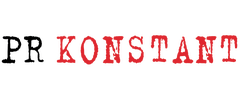Auf der IFA 2011 zeigt der Unterhaltungselektronik-Hersteller HDI Dune, erstmals seine beiden winzigen Alleskönner. In Halle 17, Stand 124, werden neben den aktuellen Geräten „Dune HD Max“ und „Dune HD Smart“ auch die neuen, ultrakleinen Player „Dune HD TV-101“ und „Dune HD TV-301“ vorgestellt. Die platzsparenden Dune-Geräte bringen Musik-, Foto und Video-Inhalte auf den heimischen Fernseher, dabei unterstützen sie HD-Content und eine Vielzahl an Video- und Audio-Formaten. Zudem bieten sie Zugriff auf Internet und Widgets, einen internen Speicher sowie viele Anschlüsse und Slots. Außergewöhnlich sind auch die Abmessungen der beiden Set-Top-Boxen (STB), die nur 11 bzw. 16 cm breit, 7 und 11 cm tief sowie 2 und 3 cm hoch sind.
Die kompakten Geräte aus dem Hause HDI Dune eignen sich als HD-Zuspieler und TV-Streamer sowie als ideale Plattform für IPTV und Video-On-Demand. Beide Player sind mit einem „Sigma Designs 8671“ Chip und einem erweiterbaren 128 MB großen Flash-Speicher ausgestattet. Die TV-301-Version bietet zudem einen SD-Kartenslot sowie die Möglichkeit zum Einbau einer 2,5-Zoll-SATA-Festplatte. Ebenfalls optional ist die Aufrüstung für den Empfang von DVB-T oder ISDB-T.
Die anschlussfreudigen Geräte weisen eine Vielzahl verschiedener Slots auf, darunter HDMI 1.3, USB 2.0, Composite und Stereo Audio (Mini Jack) sowie Ethernet 100Mbit/s. Optional ist hier die Aufrüstung mit WiFi 802.11n möglich. Die größere Version TV-301 hat zusätzlich einen weiteren USB-Port, Component- und Composite-Anschlüsse, Stereo Audio, Optical digital Audio Out, einen SD-Kartenslot sowie einen USB 3.0 Slave-Port.
Via Lan oder optional über WiFi ermöglichen beide HD-Zuspieler Zugang zum Internet. Die Benutzeroberfläche hält Widgets, sowie die Browser NetFront oder WebKit bereit. NetFront, HbbTV (smart TV) und iPlayer werden wiedergegeben. Selbstverständlich können Inhalte auch von einer externen Festplatte, einem anderen externen USB-Speichermedium, einem PC oder NAS bzw. anderen Media-Quellen aus dem lokalen Netzwerk stammen.
Wie für Dune HD-Player typisch, sind die Video-Codecs MPEG2, MPEG4, XVID, WMV9, VC1 und H.264 auch mit sehr hohe Bitraten – bis zu 50 MBit/s und höher – kein Problem.
Die ultrakleinen Multimedia-Player „Dune HD TV-101“ und „Dune HD TV-301“ spielen nicht nur alle gängigen Video-Dateiformate, sondern auch anspruchsvolle Formate wie BDVM (gebrannte Blu-Rays), ab. Auch bei Video-Dateien mit den Endungen MKV, MPEG-TS, MPEG-PS, M2TS, VOB, AVI, MOV, MP4, QT, ASF, WMV, DVD-ISO und VIDEO_TS zeigen sich die platzsparenden Multimedia-Player nicht zimperlich.
Die Verarbeitung der Audio-Codecs AC3 (Dolby Digital), DTS, MPEG, AAC, LPCM, WMA, WMAPro, EAC3 (Dolby Digital Plus), Dolby True HD, DTS HD High Resolution Audio, DTS HD Master Audio, FLAC, multichannel FLAC und Ogg/Vorbis ist möglich. Unterstützt werden auch sehr hohe Bitraten von bis zu 192 kHz / 24-bit und HD-Audio.
MP3, MPA, M4A, WMA, FLAC, APE (Monkey’s Audio), Ogg/Vorbis, WAV, DTS-WAV, DTS, AC3 und AAC Audio-Dateien geben „Dune HD TV-101“ und „Dune HD TV-301“ ebenfalls wieder.
Bilddateien von JPEG, PNG, BMP bis GIF werden mit Übergangseffekten, Slideshows, drehen, zoomen und mehr angezeigt.
Das Ethernet liegt bei 10/100 mbit/s beim TV-101 und bei 10/100/1000 beim TV-301, die Filesysteme sind FAT16/FAT32, EXT2/EXT3 bzw. NTFS.
Trotz hoher Leistung ist der Endkundenpreis niedrig: Der „Dune HD TV-101“ kostet 99 und „Dune HD TV-301“ 129 Euro (UVP).
